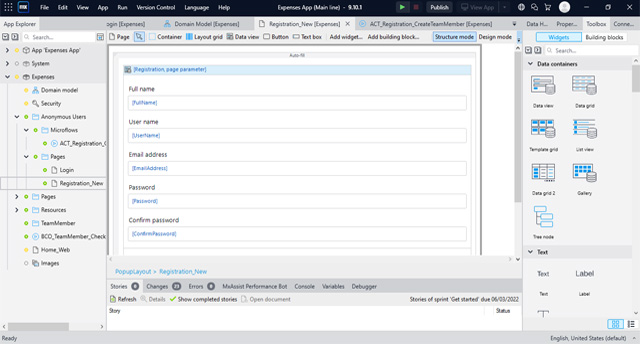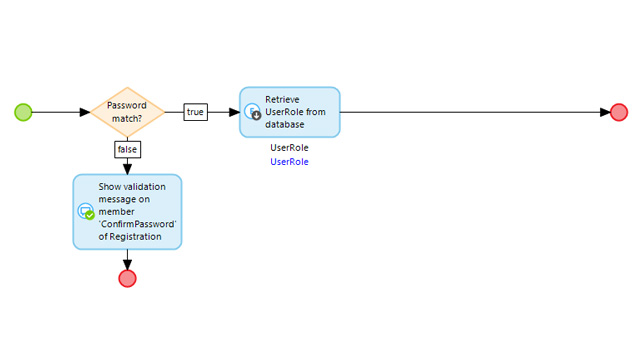We have already talked about the power of low code in general, and Mendix in particular. But what we haven’t talked about is the actual experience of using the tool. Let’s learn first-hand how it works and why it is an advantage to develop in Mendix.
The mandatory review
Before diving into the nooks and crannies of programming with Mendix, it is worth remembering some of its main features. As you already know, low code platforms allow unprecedented agility when developing applications. Thanks to its modular construction system, in a very short time you can have an application running that is already helping you to solve a problem.
And this is no exaggeration. The way it is developed on low-code platforms speeds up a lot of work that traditional code usually slows down. Here, the way in which the solution is designed has more similarities with a puzzle in which you arrange the pieces than with the endless lines of code that we are used to seeing.
Specifically, in our case we work with Mendix. It is the Siemens solution in the field of low-code development and one of the leading platforms in the market. Do you want to know more about it?
Developing in Mendix with Studio and Studio Pro
Mendix has two development tools. The first is Studio, a web-based app in which (almost) anyone can take their first steps with low code development. In this case the interface is more user-friendly, the construction of the environments is more visual and allows the development of complete applications. On the downside, it has some limitations when it comes to delving into more complex developments.

Developing in Mendix with Studio Pro allows more options.
For this, however, we have Studio Pro. In this case, the tool is installed on our computer and offers us not only the options already offered by Studio, but also an endless collection of resources to create professional applications that meet any need.
In any case, it is possible to start development in either environment and switch from one to the other at the push of a button.
First steps to develop with Mendix
To understand how Mendix works, it is necessary to abstract in order to focus on the problem we want to solve. And, initially, we need to expose in a very clear way what is called Stories. These stories are nothing more than expressions formulated in ordinary language that specify what we expect to achieve from the application. To give an example, a user story could be: “As an administrator I want to access all the customer records of my company”. As simple as that.
A Mendix development will formulate as many stories as necessary. Once they are done, they will be grouped in what are called Sprints. Sprints act as working groups that are given a completion date (between 2 and 4 weeks) and are used to mark the progress of the development. Each time a story is completed, it is marked. When all are complete, the sprint is completed.
This way of working, in which the progress is perfectly and fully documented, helps to always keep the current state of development in mind.
Time to build
Once the elements to be solved by the solution to be developed in Mendix have been specified, it is time to start building. And we say build, not program.
The first thing to do is to compose the so-called Domain Model. This is a graphical representation of the database system that will support the entire application. This is where we must define which entities and with which attributes they will interact.
In low code platforms the main feature is the possibility to generate a solution using pre-built modules. These modules, called widgets or building blocks, help to visually compose the application. With a simple drag and drop gesture we can see how everything takes shape. If we add to this the pre-existing templates that already provide us with a starting point, the start-up couldn’t be easier.

Example of microflow when developing in Mendix.
At this point, the use of microflows and nanoflows to add logical behaviors through diagrams completes the development work.
Security is also important
As a final point when developing a complete application in Mendix, we cannot forget security. In this field it is not lacking in options either. From the possibility of defining different user profiles, which will have different forms of entry, to restrict access to certain parts of the system.
With up to three different security levels and an infinite number of possible combinations, security at Mendix ensures system integrity and provides an extra layer of peace of mind.
Communication among the team
Developing an application requires the work of different people who bring different approaches and skills. In order for this team to work in harmony, when developing at Mendix, a work system is proposed in which small control meetings are held every day in addition to other meetings at the beginning and end of each development block.
As if this were not enough, the tool allows constant communication between team members, updating in real time the progress of the development. Thanks to this work system, it is very easy to detect problems, errors or weak points. A reliable way to build an application and ensure its success.
So, as we have seen, developing at Mendix follows a meticulously studied procedure to guarantee the best results. A proven, tested and working methodology that works. If you want to know more about Mendix and how it can help you face the digital transformation of your company, do not hesitate to contact us.
